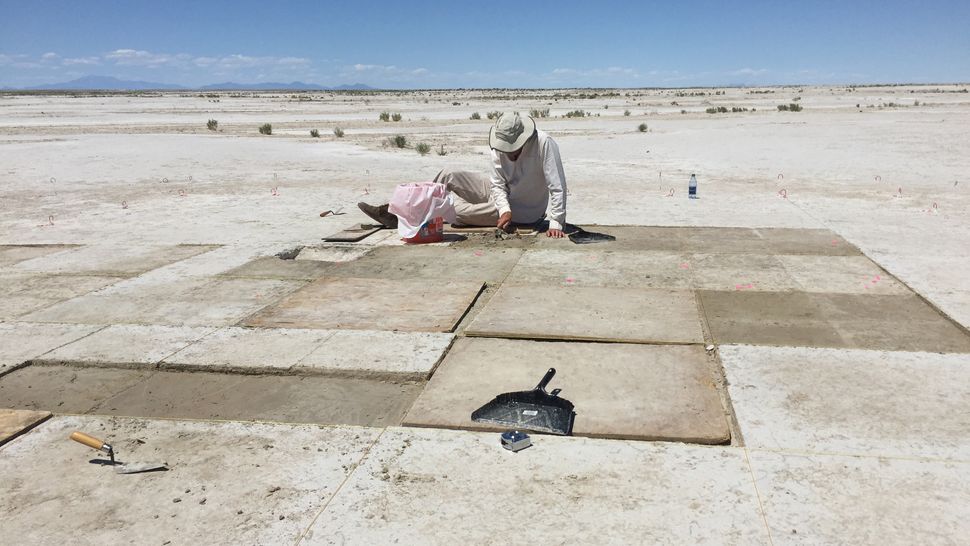Anthropology
Related: About this forumOldest evidence of humans using tobacco discovered in Utah
By Charles Q. Choi about 11 hours ago

Archaeologists found charred tobacco seeds in the remains of a hearth in Great Salt Lake Desert in Utah, dating back more than 12,000 years. Here, Kelly McGuire is digging at the hearth. (Image credit: Daron Duke)
Charred seeds found in the Utah desert represent the earliest-known human use of tobacco, evidence that some of the first people to arrive in the Americas used the plant, according to new research. The discovery reveals that humans used tobacco nearly 10,000 years earlier than previously thought, the researchers said.
Of all the intoxicant plants that humans use and abuse, tobacco has arguably had the most critical social and economic impact, the scientists of the new study said. It often played sacred, ceremonial or medical roles among the ancient Maya and other Indigenous American groups, and it helped drive the American colonial economy and thus Western expansion across the New World.
In addition to smoking, chewing and snuffing, people have used tobacco in a variety of different ways over the centuries. For example, ancient Maya rituals may have at times used intoxicating enemas of tobacco-laced fluids, and 18th-century English doctors gave drowning victims enemas of tobacco smoke in attempts to save their lives.
Until now, the earliest known evidence of human tobacco use was nicotine found in smoking pipes in Alabama that dated back about 3,300 years, according to research published in 2018 in the Journal of Archaeological Science: Reports. Now, scientists have unearthed signs that people used tobacco about 9,000 years earlier than previously thought.
More:
https://www.livescience.com/earliest-human-tobacco-use-found?utm_source=notification
Hoyt
(54,770 posts)Judi Lynn
(164,038 posts)Prehistoric peoples may have chewed tobacco seeds around the campfire.
Sarah Cascone, October 12, 2021
Humankind’s addiction to tobacco runs deep: Archaeologists in Utah have discovered what appears to be the earliest known use of wild tobacco, stretching back 12,500 years—some 9,000 years earlier than the previously dated evidence.
A team from the Far Western Anthropological Research Group in Henderson, Nevada, and the Crow Canyon Archaeological Center in Cortez, Colorado, found Nicotiana attenuata, or coyote tobacco, seeds around a manmade hearth or firepit at the Wishbone site in Utah’s Great Salt Lake Desert, not far from Salt Lake City. The researchers published their findings in the journal Nature Human Behavior.
Wishbone got its name from the large number of waterfowl bones found at the site, where ducks were likely the mainstay of the prehistoric human diet. But tobacco wouldn’t have grown in what was then a marshy area, with its closest natural habitat some eight miles away.
. . .
Also in the ashes were seeds from other plants that ancient humans are known to have consumed, suggesting that people intentionally brought tobacco seeds to the site—the population at Wishbone appears to have traveled widely each year. The seeds wouldn’t have burned well, so they were probably not being used to feed the fire. Most likely, the ancients liked to chew tobacco, releasing the addictive nicotine for a dopamine high.
More:
https://news.artnet.com/art-world/archaeologists-discover-12300-year-old-tobacco-use-2019581